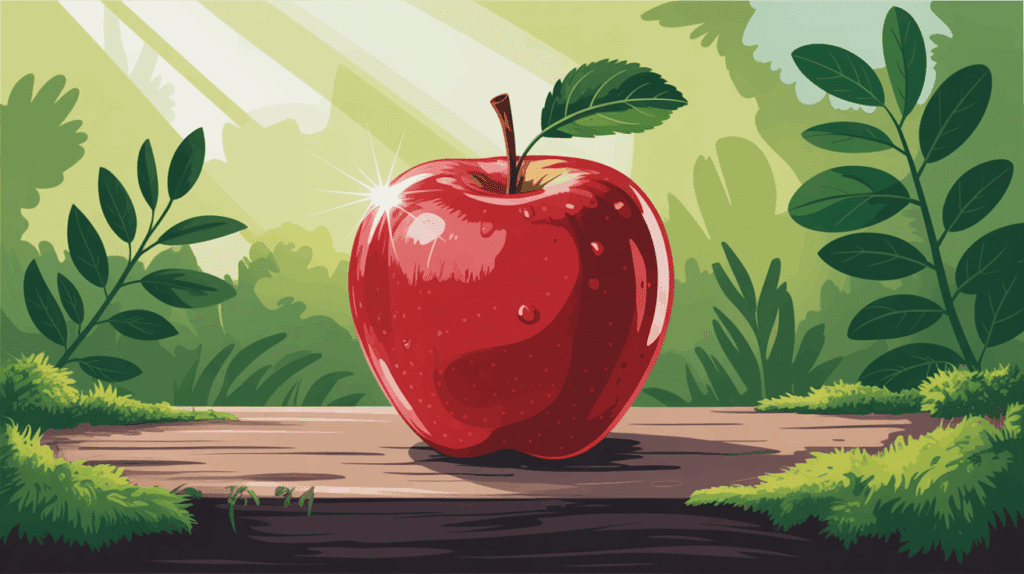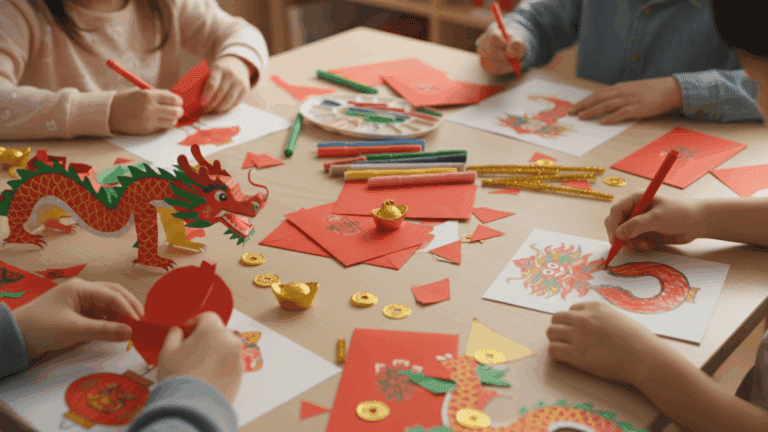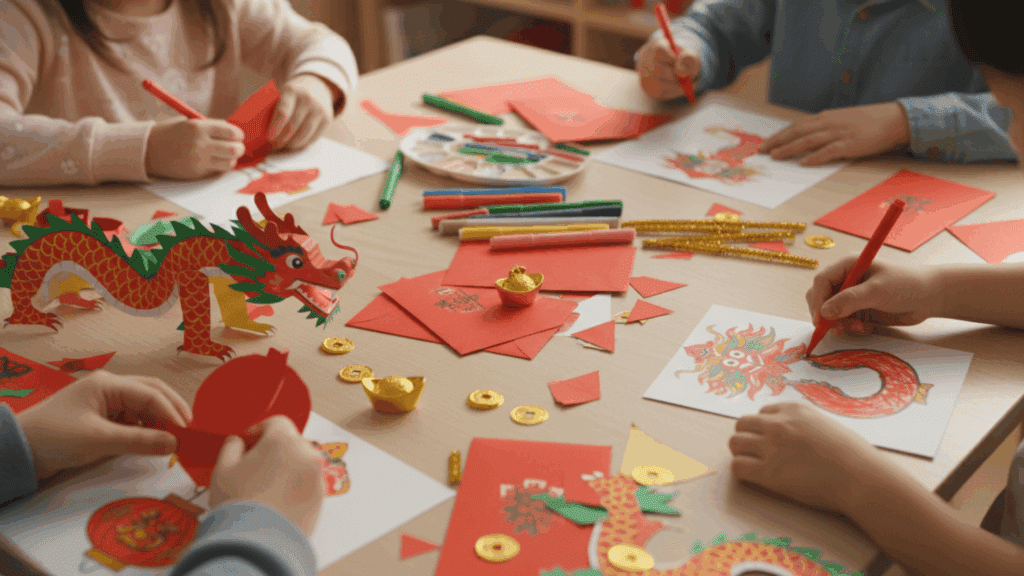Children see an apple and think snack time. But there’s something magical that happens before that crispy bite reaches their hands.
When children learn about apple life cycles, they start understanding nature’s patterns and basic science concepts.
It builds their connection to healthy eating habits. Visual learning tools help these concepts stick better than any textbook explanation could.
Apple life cycle printable makes abstract ideas concrete and fun. These hands-on materials change complex biological processes into simple, engaging activities that children actually want to complete.
A Simple Breakdown of the Apple Life Cycle
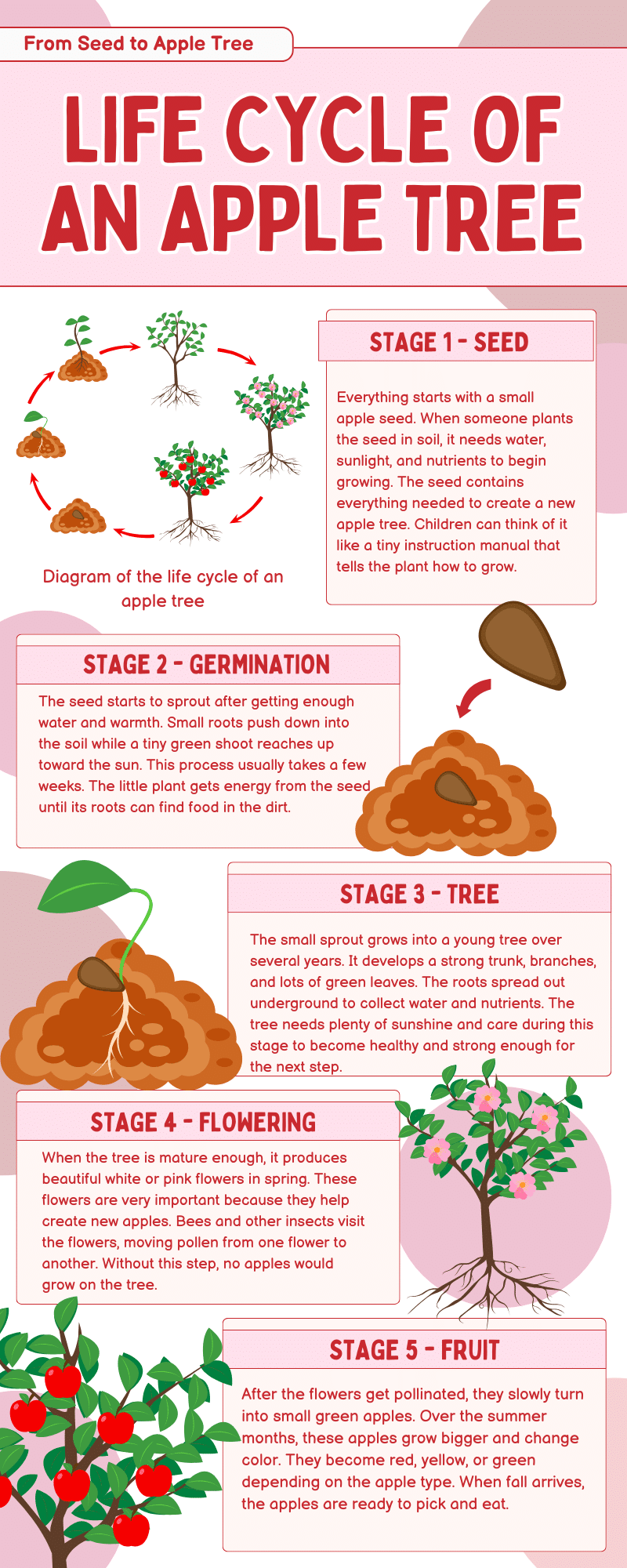
Learning about how apples grow helps children understand nature’s process. Each stage has its own special role in creating the fruit we love to eat.
Stage 1: The Seed
Everything starts with a small apple seed. When someone plants the seed in soil, it needs water, sunlight, and nutrients to begin growing.
The seed contains everything needed to create a new apple tree. Children can think of it like a tiny instruction manual that tells the plant how to grow.
Stage 2: Germination
The seed starts to sprout after getting enough water and warmth.
Small roots push down into the soil while a tiny green shoot reaches up toward the sun. This process usually takes a few weeks. The little plant gets energy from the seed until its roots can find food in the dirt.
Stage 3: Tree Growth
The small sprout grows into a young tree over several years. It develops a strong trunk, branches, and lots of green leaves. The roots spread out underground to collect water and nutrients.
The tree needs plenty of sunshine and care during this stage to become healthy and strong enough for the next step.
Stage 4: Flowering
When the tree is mature enough, it produces beautiful white or pink flowers in spring. These flowers are very important because they help create new apples.
Bees and other insects visit the flowers, moving pollen from one flower to another. Without this step, no apples would grow on the tree.
Stage 5: Fruit Development
After the flowers get pollinated, they slowly turn into small green apples.
Over the summer months, these apples grow bigger and change color. They become red, yellow, or green depending on the apple type. When fall arrives, the apples are ready to pick and eat.
Did You Know?Apple trees can take 5–10 years to bear fruit! That means a child who plants a seed might be in middle school before they can eat apples from their tree.
Download the “A Simple Breakdown of the Apple Life Cycle” Printable
Free Apple Life Cycle Printables to Download and Use
Finding the right apple life cycle printable can make science lessons more engaging for children. These free resources offer hands-on activities that help students learn while having fun.
1. Apple Life Cycle Q&A Sheet
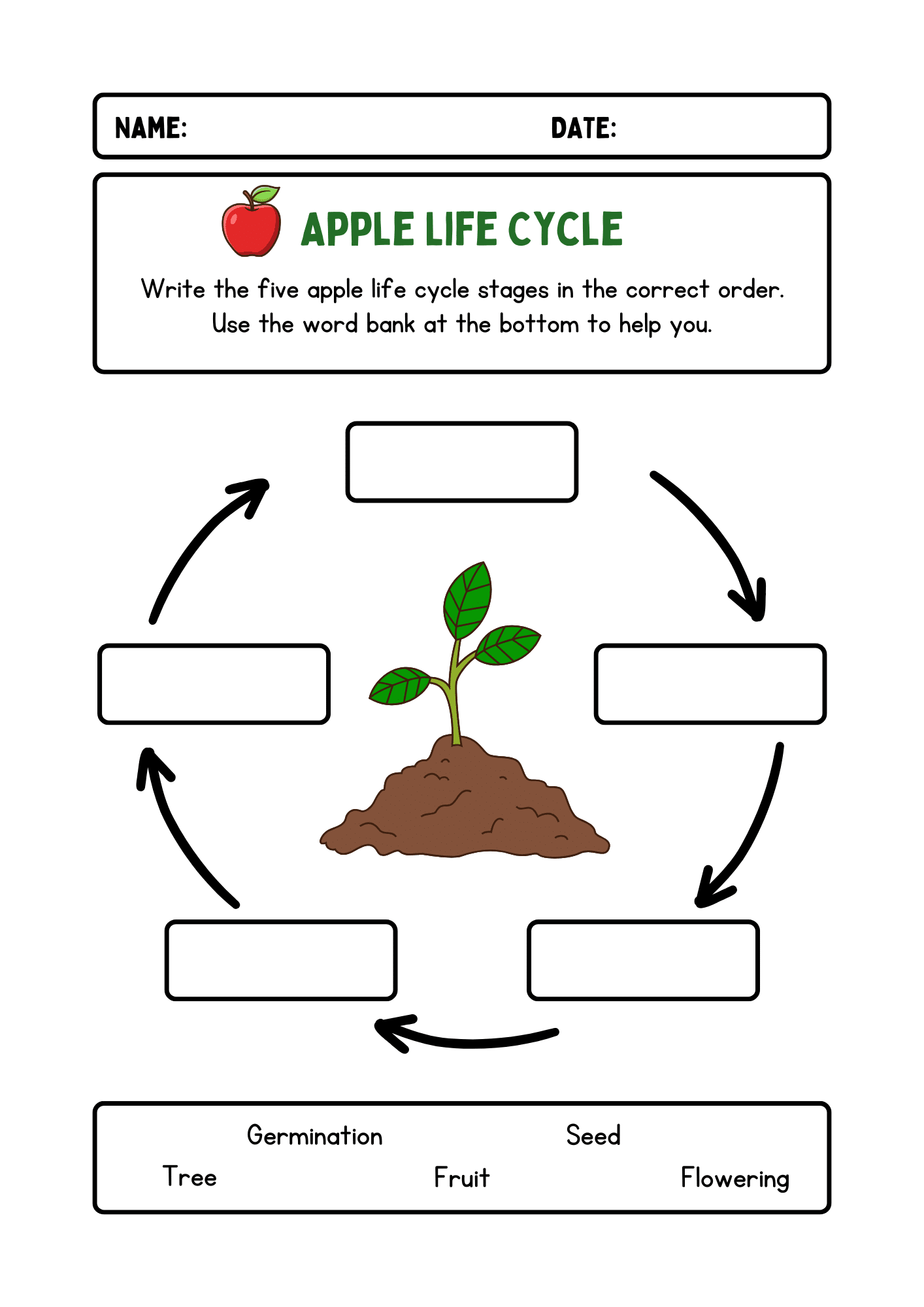
This fill in the blanks printable features each growth. The activity promotes comprehension, sequencing, and retention of information. Kids love the interactive element that keeps them engaged throughout the lesson.
Download the “Color-Me Apple Life Cycle Mini Book” Printable
2. Color-Me Apple Life Cycle Mini Book
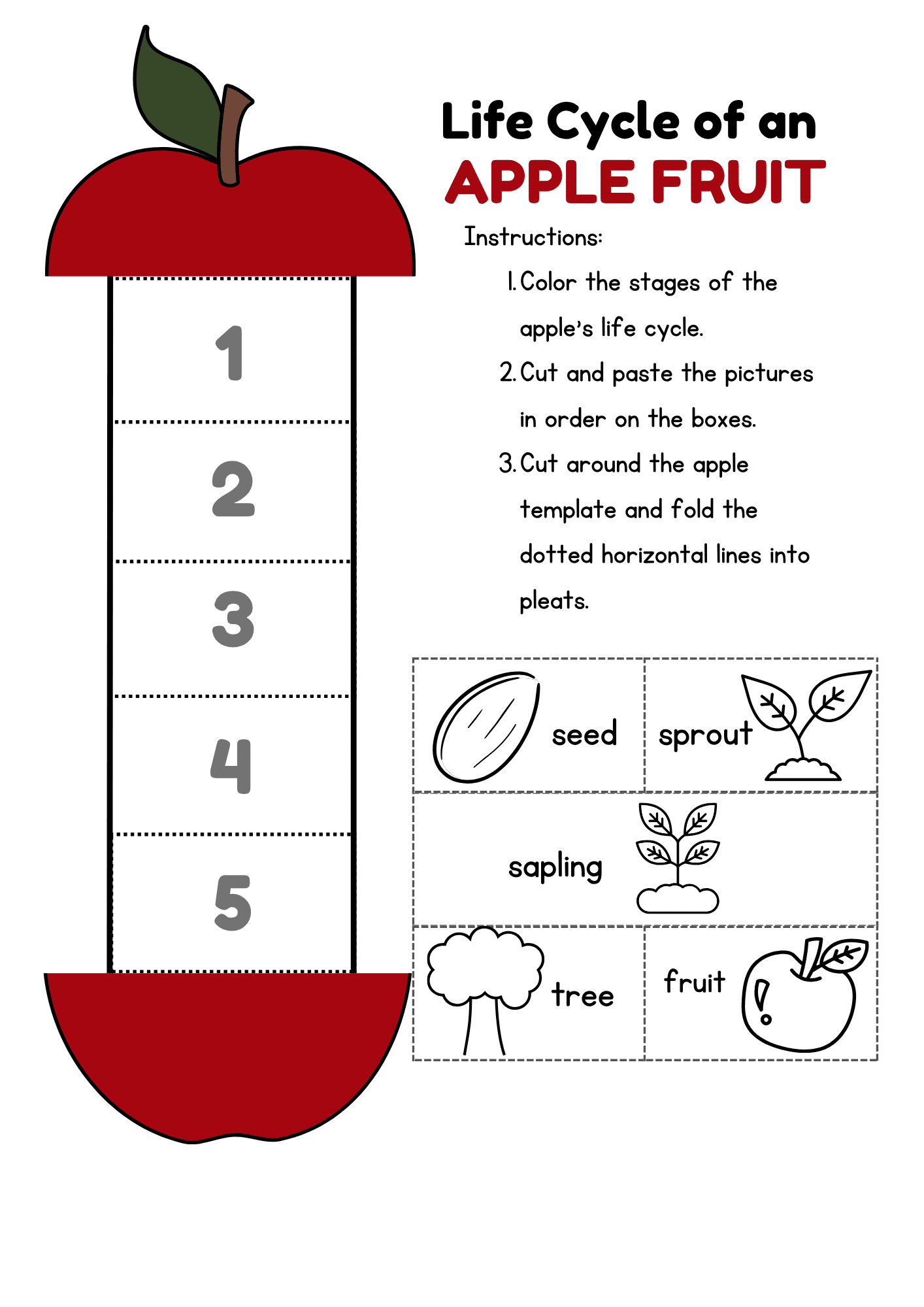
A foldable mini-book contains blank apple stages for children to color and label themselves. This printable encourages creativity while reinforcing stage identification.
Students feel proud when they complete their personalized booklet, which they can keep and review later.
Download the “Color-Me Apple Life Cycle Mini Book” Printable
Apple Life Cycle: Color and Count

This printable features a cartoon apple tree filled with apples for young children to color and count. Kids practice basic math skills while learning about the final fruit stage.
The activity combines art, counting, and science learning in one fun worksheet perfect for preschool and kindergarten students.
Download the “Color-Me Apple Life Cycle Mini Book” Printable
Wrapping Up
Apple life cycle printable changes abstract science concepts into hands-on learning experiences that children remember.
These free resources give teachers and parents practical tools to make biology lessons interactive and fun.
When students understand how their food grows, they build stronger connections to nature and healthy eating habits. Visual activities help information stick better than traditional textbook methods.
Children will love the interactive elements while learning valuable concepts.


